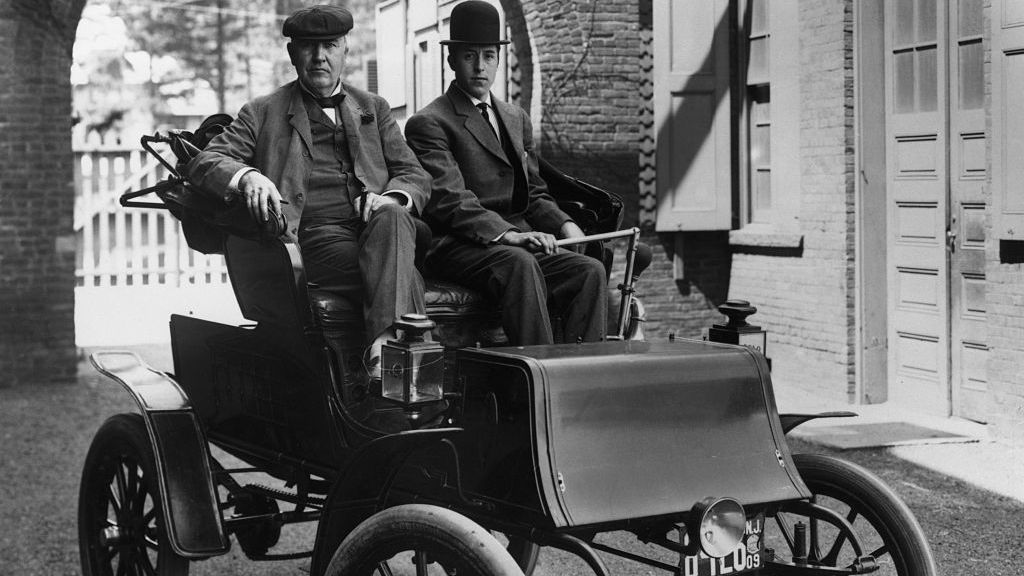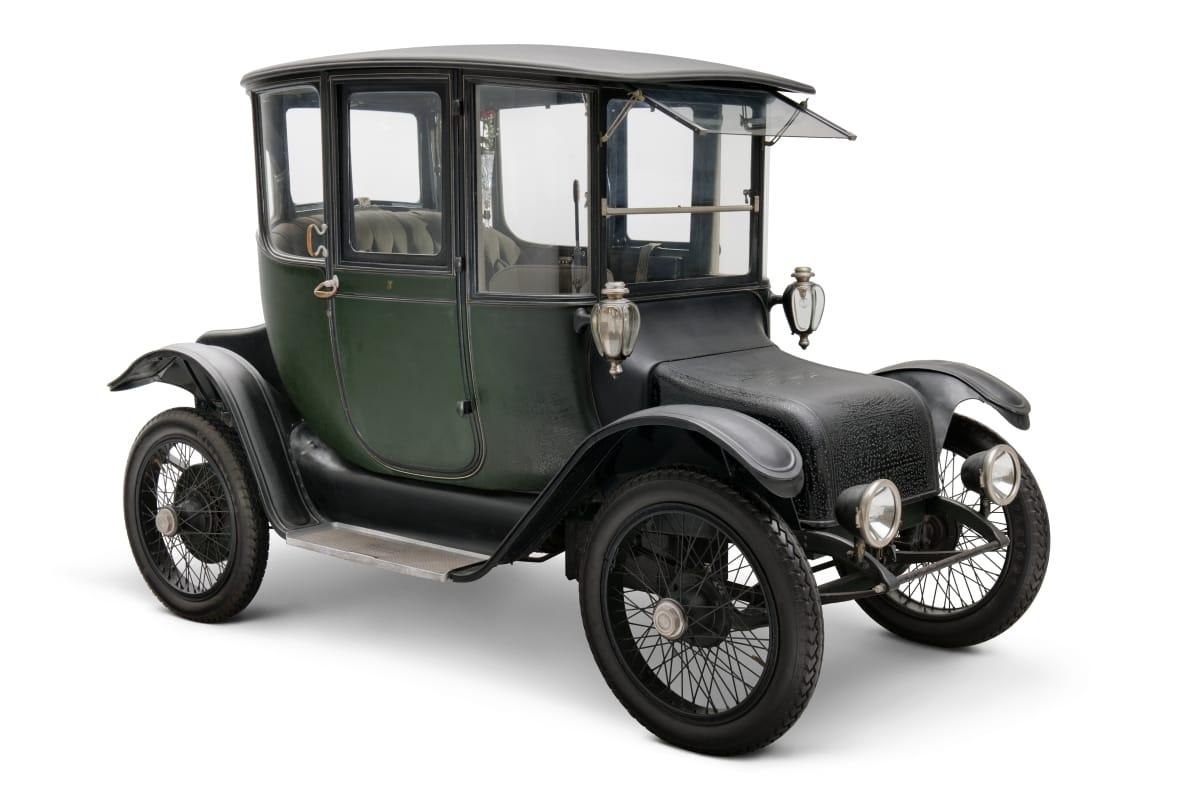There’s something special about driving an electric car. Perhaps it’s the silence of the motor as you propel forward, or the futuristic feel of the charging plug. In the case of Tesla, the ultra-modern tech certainly adds to the ambience.
But while Electronic Vehicles (EVs) are the future of driving, their origins are solidly rooted in the past.
EVs seem like they came onto the market and slowly gained popularity over the past decade or so. This has largely been due to the popularity of Elon Musk’s Tesla brand, with the first Tesla Roadster being realised back in 2008.
[related_content first=”1220823″]
Since then other brands have followed, providing customers who can afford it with alternative car options that are better for the environment and cheaper to power.
But what we have been experiencing hasn’t been the rise of the EV, but rather the resurgence. Not only were the first EVs invented far earlier than most people think, they weren’t a mere fringe invention. EVs were actually an incredibly popular mainstream means of transportation in the early years of car manufacturing.
Electric vehicles are older than you think and were really popular

According to Jalopnik, the first attempts at electric vehicles were as early as the 1830s. But the first full-sized EV wasn’t developed until 1895. It was a six person wagon that had a top speed of 15 mph, or 22 km/h.
Over the next few years, other manufacturers followed suit, including Ferdinand Porsche. He manufactured an EV called the Lohner Porsche in 1898 — 33 years before establishing the Porsche company. He also developed a hybrid electric and combustion engine car in 1900 called the Semper Vivus.
The popularity of EVs rose over the next decade. According to the U.S. Energy department, EVs made up a third of the U.S. car market at the turn of the twentieth century — along with gasoline and steam powered vehicles. There was even a fleet of EV taxis in New York City.
Part of the reason for the success of EVs at the time seems to have come down to convenience. Unlike today, petrol-powered motors cars were said to be noisy and emitted smelly fumes.
They were also difficult to operate as they needed a hand crank to start and gear changes were difficult. Steam-powered cars reportedly had a similar issue with convenience and could take up to 45 minutes to start.
Comparatively, EVs didn’t have as much vibration or road noise and had a longer range than its steam powered counterpart.
Why electric vehicles disappeared
Despite enjoying a few decades of popularity, electric vehicles were eventually replaced by petrol motor vehicles — and this most mostly due to pricing.
Henry Ford released his Ford Model T in 1912 and thanks to a combustion petrol engine and mass production, it was a third of the price of an EV at the time. According to Tech Insider the Model T cost around $US650, with an electric roadster coming in at about $US1,750.
Petrol engines also steadily became easier to operate when features such as electric starters were introduced.
What’s interesting about Ford is that despite destroying the EV market, he did consider getting in on it — with the help from his good friend Thomas Edison in 1914. The pair were so close that they would even go on glamping road trips together.

“Within a year, I hope, we shall begin the manufacture of an electric automobile. I don’t like to talk about things which are a year ahead, but I am willing to tell you something of my plans,” Ford said to the New York Times in 1914.
“The fact is that Mr. Edison and I have been working for some years on an electric automobile which would be cheap and practicable. Cars have been built for experimental purposes, and we are satisfied now that the way is clear to success. The problem so far has been to build a storage battery of light weight which would operate for long distances without recharging. Mr. Edison has been experimenting with such a battery for some time.”
In fact, Edison had been working on electric batteries for EVs since the late nineteenth century.
Over the next couple of years, several prototypes are said to have been developed, but an Edison-Ford electric vehicle never made it to production. There are several conspiracy theories as to why – including mysterious factory fires and even an oil cartel.
According to Wired, it seems like it may have come down to a disagreement between Ford and Edison regarding the use of the latter’s nickol-iron batteries in the car. They were apparently not reliable enough to power the car and were allegedly swapped out for heavier lead-acid batteries behind the maker’s back. Ford is said to have been angry about the substitution and the project was subsequently abandoned.

It may have also just ended up being too expensive a venture. According to The Ford Century, Ford is said to have invested $US1.5 million in the EV project, which is about $US31 million in modern U.S. currency. He also apparently purchased 100,000 batteries from Edison.
While electric cars were dabbled with further over the 20th century, it took almost 100 years for them to be revisited as a serious consideration for automakers. Environmental awareness certainly played a part in this shift, as did the rise of emissions regulations in the U.S. such as the 1990 Clean Air Act.
The future of electric vehicles

While Tesla seems to have quite literally led the charge here, there were manufacturers that came before Elon Musk who paved the way for this resurgence, particularly in the hybrid space. The Toyota Prius, which was released globally in 2000, has been a taste maker when it came to hybrid vehicles, which combine a petrol or diesel engine with an electric motor.
While the global appetite for EVs has grown again over the past two decades, we still seem to be facing the same issues as the early 20th century models — cost and a lack of convenience.
For the most part, EVs continue to be an expensive alternative to ‘traditional’ petrol engines. And while there are some dedicated EV manufacturers such as Tesla, most auto brands only have one or two EV models to their name.
The main issue playing into a lack of convenience is range anxiety. While EV charging networks are cropping up across the world, they are far from being as prevalent as traditional petrol stations.
The lack of government incentives has also made uptake difficult in certain parts of the world. While various countries across Europe and Asia offer subsidies and other benefits to EV drivers, here in Australia they are practically non-existent. Furthermore, due to the cost of most EVs in this country, they tend to get hit with a Luxury Car Tax (LCT), despite the fact that LCT amounts are calculated by fuel usage.
While it seems that EVs may have a better chance at surviving this time around, there is still a lot of work that needs to be done to encourage adoption. After all, they disappeared after a few decades of use before. If we repeat history and opt for the easier, cheaper and ultimately less environmentally friendly route, it could happen again.
